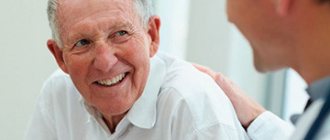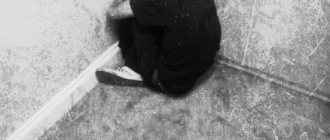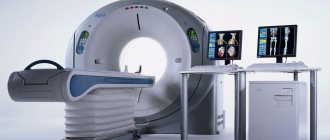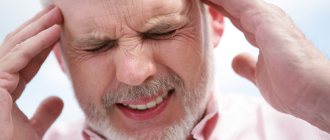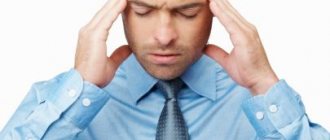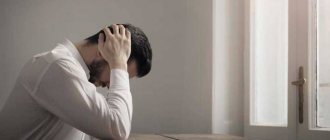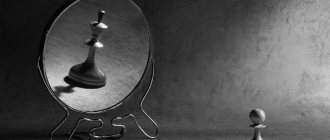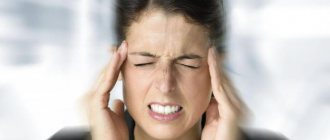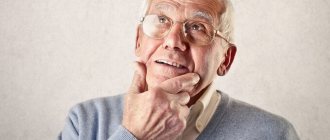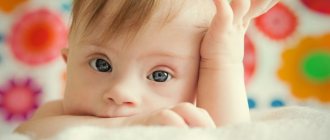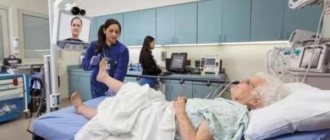In acute cerebrovascular accident, the victim experiences a sudden unbearable headache that increases with bending, turning, and any physical effort. In order to call emergency help in time and save a person’s life, you need to know what other clear signs of a stroke and symptoms of a micro-stroke are available. According to statistics, more and more young people are encountering these ailments, although previously it was believed that such vascular pathology occurs only in old age.
What is a stroke and mini-stroke?
Stroke is an acute cerebrovascular accident (CVA). Occurs due to vascular obstruction or damage to the arteries through which blood supplies the brain tissue. All this leads to disruption of basic brain functions. A microstroke or minor stroke is a stroke with a neurological deficit that lasts from 24 hours to 3 weeks. It is often confused with a transient ischemic attack (TIA), which develops as a result of short-term local cerebral ischemia and is characterized by sudden transient neurological disorders with focal symptoms. The detrimental result of a stroke is the death of parts of the brain that do not receive blood within a few minutes. Subsequently, healthy areas of the brain can take on “responsibility” for the work of dead tissue, but, as a rule, only partially.
Signs of stroke and micro-stroke in women
A stroke can happen suddenly and the first thing to do is call a doctor.
First aid
At the first alarming signs, it is especially important to call an ambulance for the victim in time to save a life. While paramedics are en route, a stroke patient should:
- Lay the victim down, raising his head above the level of his feet.
- Do not move the victim, leaving him at rest.
- Free him from tight clothes: unbutton his shirt collar, take off his tie, loosen his belt, take off his shoes.
- Provide fresh air flow.
- Don't allow drinking.
- When vomiting, turn your head to prevent the patient from choking on the vomit.
- Perform artificial respiration if necessary.
- If the patient is unconscious, turn him on his side, place his head on his arm bent at the elbow, and bend his leg.
- If you know that a person has hypertension, measure your blood pressure. If the indicators are high, give the medicine that he usually takes.
Medical assistance consists of:
- Reduced blood pressure.
- Improving the functions of the heart and blood vessels.
- Restoration of normal blood circulation.
- Normalization of metabolic processes in neurons.
- Relieving possible cerebral edema due to improved vascular microcirculation.
The later assistance is provided to a patient with a cerebrovascular accident, the worse the results will be for further recovery. Ideally, it is advisable to start therapy at the first signs of illness, but this happens very rarely.
Features of stroke and micro-stroke in women
In earlier times, it was believed that stroke was a function of older people and that it affected both sexes over 60 years of age equally often. More recent studies have shown that stroke in women has its own characteristics. Here are some facts:
- Stroke affects women later than men. Men over 40 years of age are at risk, while the age limit for women is 60 years and older.
- The risk of stroke in women increases during pregnancy.
- The mortality rate from strokes among women exceeds the mortality rate among men.
- Stroke in women is more severe and more difficult to tolerate than in men.
- The chances of full rehabilitation after a stroke are lower for women; not everyone can return to a normal life after suffering an illness.
- In recent years, cases of strokes in young women have become more frequent; the age group at risk is from 18 to 40 years.
- Women are more likely to ignore early signs of stroke than men.
- Women have a higher risk of cardiovascular disease and a tendency to develop blood clots.
- A risk factor may be the use of contraceptives, in particular oral contraceptives.
- Women are more emotional and more susceptible to stress, and this negatively affects the state of the cardiovascular system.
Schematic representation of a stroke
The life of a modern woman is full of risks for the development of pathologies of the cardiovascular system.
Microstroke and gender differences
Since the female and male bodies have specific functioning characteristics, the risks and signs of micro-stroke in women and men also differ.
Attack in women
Women are more predisposed to the occurrence of micro-stroke and stroke: this is explained by a higher likelihood of blood clots and complications in the vascular system (physiological feature).
Also, women are less stress-resistant, more focused on problems, which automatically puts the fair sex at risk.
The symptoms of a microstroke in women will also be specific (in addition to the standard ones mentioned above), the main ones are:
- severe numbness, weakness of both sides of the face or one of them;
- tingling in the arms and legs (or one of the limbs);
- inability to construct a clear, coherent statement;
- red face, deep, rapid breathing;
- convulsions;
- blurred vision (in one or both eyes);
- sudden, sharp headache.
However, some women showed atypical symptoms of a cerebral microstroke :
- a sharp attack of hiccups;
- depression, lack of control over emotions;
- pain attack in one of the limbs;
- severe nausea, abdominal pain;
- loss of consciousness, disorientation;
- chest pain;
- dry mouth;
- suffocation;
- sudden rapid heartbeat.
It has also been established that women who smoke have a greater chance of having a micro-stroke than men who smoke.
How does the disease manifest in men?
There are symptoms of a mini-stroke that will be more typical for men:
- cloudiness, confusion of creation;
- a sudden attack of uncontrollable weakness;
- hearing impairment;
- unsteady gait;
- inability to perceive the world around us normally;
- speech disorder;
- sudden headache.
This is the most common symptom among men.
However, in certain cases, atypical symptoms (more typical for women) are possible.
It is also possible to have almost complete absence of symptoms: in both women and men.
Causes
A stroke is always preceded by chronic diseases, and, as a rule, a stroke occurs during an exacerbation period. Such diseases include:
- arterial hypertension;
- cerebral atherosclerosis;
- hypertonic disease;
- arrhythmia;
- diabetes;
- thrombosis;
- embolism (impaired arterial patency formed outside the vascular system of the brain);
- rupture of an arterial aneurysm.
Causes of stroke
Stroke is most likely to occur when two or more of the diseases listed above are combined.
Ischemia and hemorrhage: clinical features
There are two main types of stroke:
- Hemorrhagic . With hemorrhage, 90% of cases end in the death of the victim. This is the most dangerous type of illness, the causes of which in young people are often hidden in severe overwork. Hemorrhagic stroke is accompanied by rupture of cerebral vessels, and sometimes occurs without compromising their integrity. The rupture of the vessel leads to the release of blood into the brain cavity, which causes the formation of a hematoma or tumor. If a rupture does not occur, the damaged vessel, deforming, stretches and allows blood to flow into the brain tissue.
- Ischemic stroke. Often occurs after a microstroke of the brain. Develops due to impaired blood circulation as a result of narrowing of blood vessels and their clogging. As a result, nutrients stop flowing to the brain, causing the death of its cells and tissues. Complete necrosis of cells without the possibility of their recovery occurs within 48 hours. Therefore, it is necessary to diagnose the pathology in a timely manner and carry out emergency treatment in order to avoid death and severe disability of the victim.
Signs of stroke in women
In both sexes, stroke symptoms will depend on the part of the brain affected by the stroke. If the left side of the brain is damaged, symptoms will appear in the right side of the body and, on the contrary, damage to the right hemisphere of the brain will affect the parts of the body and organs located on the left (each hemisphere is responsible for the opposite side of the body). This is due to the fact that the cells of the cerebral hemispheres control the functioning of the body (breathing, speech, movements, etc.), and when they are damaged by a stroke, control over the organs is lost.
Accordingly, if the right hemisphere is affected, symptoms will appear on the left side of the body, and vice versa.
Signs of stroke in women
The main signs of a stroke in a woman include:
- severe headache;
- loss of coordination of movements, falling;
- sudden dizziness;
- numbness of the face;
- numbness of one half of the body, difficulty moving and gesturing;
- loss of balance;
- convulsive muscle contractions;
- speech disorder - the patient speaks unintelligibly or is unable to speak at all. Doctors call it motor aphasia;
- inability to understand the speech of others – sensory aphasia;
- sudden deterioration of vision. Vision in one eye may completely disappear;
- increased body temperature;
- nausea and vomiting;
- urinary and fecal incontinence;
- hiccups;
- violation of the swallowing reflex and, as a result, the inability to eat;
- difficulty breathing and disruption of its rhythm;
- facial redness;
- uncharacteristic expressed emotions - laughter for no reason or, conversely, sobs;
- loss of consciousness;
- disorientation in space.
It is not necessary to have all the symptoms at once, but if several of them are observed at the same time, a stroke may be suspected.
Curvature of one part of the face in a woman who had a stroke
Manifestations in men
Specific signs of stroke in male patients include:
- Confusion.
- Sudden feeling of lethargy.
- Problems with the perception and reproduction of sounds.
- Acute pain in the skull area.
- An attack of vertigo (dizziness).
- Light and noise sensitivity.
- Violation of stability.
Sometimes the victim himself may not notice suspicious symptoms that are clearly visible to outsiders. If you suspect a stroke, you need immediate help if:
- The victim can be heard speaking incoherently or stops speaking.
- The person does not react to others and becomes extremely absent-minded.
- There was a stutter.
- The victim fell and cannot get up.
- Facial asymmetry is noticeable.
Symptoms of a microstroke
A microstroke also has its own specific symptoms, which include:
- headache;
- dizziness;
- nausea and vomiting;
- numbness of the limbs;
- difficulty moving and gesturing;
- sensory disturbance;
- "goosebumps;
- paralysis of legs, arms;
- slurred speech;
- other symptoms characteristic of a stroke.
A microstroke goes away quite quickly. Symptoms usually subside within 3 weeks. This is how a micro-stroke is recognized - if the patient has returned to normal, such a diagnosis can be made after the fact.
If after a while the patient’s condition does not return to normal, we can talk about a major stroke.
A series of short-term ischemic attacks may occur. Often serial brain disorders lead to dementia - acquired dementia. Micro-strokes cannot be ignored - you must immediately seek medical help. The outcome of treatment will depend on the timely assistance of specialists.
Signs of a mini-stroke
To identify a micro-stroke that affects the blood vessels of the brain, you need to understand how it differs from a stroke and how it is expressed. With a micro-stroke, small vessels become clogged, resulting in necrosis of brain tissue affecting a small part of the organ, which has virtually no effect on its functioning as a whole. Restoration of the body and the functions of the main organ of the nervous system occurs due to the replacement of dead neurons with other cells, which subsequently negatively affects the functioning of the brain.
The smaller the affected area, the greater the patient’s chances of recovering to the state of a healthy person. If the brain cells are severely damaged and restoration of its functions is not possible, then the risk of developing a recurrent stroke increases greatly.
Depending on which side the cerebral vessels are damaged, the following symptoms of a microstroke occur:
- Loss of stability.
- Change in gait when walking.
- Numbness of the limbs.
- Loss of sensation.
- Impaired speech perception.
- Numbness of the right arm and right leg (or left arm and leg).
- Vision problems – the patient has difficulty viewing objects with both eyes at once.
- The occurrence of an attack may be accompanied by nausea and vomiting.
A microstroke can be identified by the following signs:
- It is necessary to ask the victim to smile. Mimic mobility of the face on one side will be impaired.
- When an ischemic stroke develops, the patient's tongue turns or bends to one side.
- The patient will have difficulties with pronunciation and intelligibility of speech if he is asked to say a simple sentence or his last name.
- Brain damage makes it much more difficult for the victim to stretch his arms forward, palms up: one limb will necessarily be pulled to the side.
By what signs can you identify a woman’s stroke on her own?
How to identify a stroke
If you suspect a stroke, ask the woman to do a few simple steps:
- Smile. If she has a stroke, she will either not be able to do this, or her mouth will become distorted, since one half of her face will remain motionless.
- Stick your tongue out of your mouth. If the tongue is directed to the side, this is a stroke. Moreover, the tip of the tongue will rush towards the site of brain damage (if it deviates to the left, the left hemisphere is affected and vice versa).
- Raise your hands. During a stroke, the patient will not be able to do this, and even if she can, she will not be able to hold them up due to muscle weakness.
- Say something. Say a simple phrase and ask him to repeat it. Due to speech disorders, the patient will not be able to speak or will say something incomprehensible.
During a stroke, a woman may fall due to lack of coordination of movements and partial loss of control over her body.
Video - Stroke: symptoms and causes, treatment methods. First aid for stroke
What are the possible complications of a stroke?
The most common complications of stroke include:
- Weakness or paralysis on one side of the body
- Difficulties with speech and language
- Poor balance and/or clumsy movements
- Difficulty swallowing
- Loss of bladder and bowel control
- Problems with memory, thinking and solving everyday problems
- Deterioration of vision and/or visual changes
- Numbness of parts or areas of the body.
Are emotional changes normal after a stroke?
Yes, brain damage and partial loss of functionality can indeed lead to emotional changes. Soon after a stroke, a person has difficulty controlling emotions, and frequent mood swings are quite possible. For example, he may suddenly burst into tears or start laughing loudly for no reason. Fortunately, this goes away in most cases over time.
Depression, sadness, and sadness as you adjust to the changes caused by your stroke are normal and treatable reactions. It is very important to inform your doctor about all your experiences and sensations so that he can help in time.
Is it possible to drive a car after a stroke?
This decision cannot be made on your own. Only a doctor can help answer this question, since a stroke has a negative impact on reaction, vision and speed of thinking. In certain cases, this can cause danger both for the driver and for other road users.
If your doctor still agrees, you should contact your local department of motor vehicles and find out about the rules for allowing people who have had a stroke to drive. These rules vary from country to country, but often involve repeating exam tests or attending special classes.
If you are not allowed to drive a car for health reasons, at first this will cause natural discomfort. At the same time, there are many other options for getting around the city, including public transport and taxis. Additionally, you can always ask family members and friends for a ride.
What to do if a woman is suspected of having a stroke or micro-stroke?
A patient with suspected stroke or microstroke needs urgent hospitalization. The outcome of treatment and how quickly the patient returns to her usual rhythm of life depend on how quickly measures were taken. It would be good if she could be hospitalized within two to three hours from the moment of the suspected stroke. If urgent hospitalization is not possible (for example, the patient lives far from civilization), it is necessary to lay her on the bed in a comfortable position and do everything to prevent her condition from getting worse. If this is not done, serious complications may occur. Your head needs to be turned to the side. A stroke victim needs to be calmed down if she is agitated or panicked. Until doctors arrive, do not allow her to stand up or roll over. Apply a cold compress to your forehead - a moistened towel or an ice pack; any product from the freezer will also work. Next, do everything to ensure that the patient has access to fresh air: open the windows, take off or unfasten clothes, do not smoke indoors. If you have a blood pressure monitor on hand, measure the stroke victim's blood pressure. If the readings are elevated, give her medication to lower her blood pressure. It’s good if these are the drugs that she took before the stroke - it’s better not to experiment with new medications in this condition.
What to do before doctors arrive if you have a stroke
After hospitalization, the patient will be under constant supervision of a therapist, and specialists such as a neurologist, endocrinologist and cardiologist will participate in the treatment. With an integrated approach to treatment, the patient’s chances of full rehabilitation are very high.
It is important to hospitalize the patient in the first two to three hours after a stroke
What is rehabilitation after a stroke?
Rehabilitation is a very important part of treatment after a stroke. It helps strengthen the body and increase coordination, endurance and self-confidence. The main goal of rehabilitation is to teach a person to live as independently as possible under conditions of changes and restrictions caused by a stroke. Rehabilitation may include physical therapy, as well as occupational, speech and swallowing therapy.
Your doctor will determine what type of rehabilitation is best for your case. The course of rehabilitation, as a rule, begins immediately after the end of the stroke and stabilization of the person’s general condition. In many cases, it begins in the hospital 24-48 hours after the attack itself. Most people have to continue rehabilitation for several months or even years.
Is it possible to prevent a stroke?
A stroke does not occur suddenly. As a rule, it is preceded by disorders that can be recognized by paying close attention to your health. The risk of stroke is high in the presence of slowly developing insufficiency of the blood supply to the brain. This disease can be identified by the following symptoms that have appeared over the past few years:
- memory impairment;
- frequent headaches for no reason;
- dizziness and loss of balance;
- noise or ringing in the ears;
- lethargy, apathy, lack of initiative;
- low performance.
If you notice two or more of these symptoms, this is a reason to be examined at the clinic.
How to recognize a stroke in women
Stroke can be prevented by following a few simple but important rules:
- Do not start chronic diseases. It is better to treat all ailments at once, preventing them from becoming chronic. If this happens, see a doctor and conduct general monitoring of your health, especially in the acute phases of the disease, when the risk of stroke increases significantly.
- If you have diabetes, you should always monitor your blood sugar levels. As stated above, diabetes is a significant risk factor for stroke.
- If there is a need for oral contraceptives, they should be taken only after examination and only those prescribed by the doctor. While taking the medications, you need to see a doctor and monitor your condition, in particular, take a general blood test and monitor the platelet count (the formation of blood clots is a side effect of most oral contraceptives, and blood clots increase the risk of stroke). During the course of treatment, women should refrain from smoking.
- Exercise. Physical activity keeps blood circulation normal and stimulates stable functioning of the cardiovascular system.
- Sleep at least eight hours a night. Chronic lack of sleep leads to circulatory disorders in the vessels of the brain.
- Avoid excess weight, and if you have it, get rid of it. Obesity leads to many diseases, including cardiovascular disease, and increases the risk of stroke.
- Do not abuse alcohol and abstain from so-called “energy drinks”, which have a detrimental effect on the functioning of the heart.
- Acquire a healthy diet: eat healthy food and drink clean water. It is advisable to follow a diet.
- Be examined by a doctor at least once a year, for older people - once every six months.
Exercising helps prevent stroke
Exercise and a healthy lifestyle are the key to a healthy cardiovascular system even in old age.
How to prevent a stroke
A stroke is dangerous to health and life, but if you take timely measures, you can minimize the harm to the body. Pay close attention to your health and do not neglect scheduled examinations!
LiveInternetLiveInternet
Quote from Irzeis' message
Read in full In your quotation book or community!
Stroke: Symptoms, first signs and first aid
If there is a threat of a stroke, you cannot waste a second: how quickly help is provided to the patient depends on his life and the possibility of further recovery.
Vascular diseases of the brain are an urgent not only medical, but also a social problem. Every year, strokes affect about 6 million people worldwide and claim more than 4 million lives.
.
Relentless statistics also show that the majority of patients who have suffered a stroke become disabled, unable to cope without outside help ( stroke ranks first among all existing causes of disability
). Such depressing figures are an indicator that few will be able to avoid a collision with a stroke: this terrible disease sooner or later overtakes either the person himself or one of his relatives or immediate circle.
A serious cerebrovascular disease – stroke, or also called “brain stroke”
, includes a whole group of diseases caused by acute cerebrovascular accident, which leads to damage to brain tissue and disruption of its functions.
Stroke is a brain disease caused by blockage (ischemia) or rupture (bleeding - hemorrhage) of a vessel supplying part of the brain, or bleeding into the membranes of the brain. Thus, there are two types of stroke: stroke of the hemorrhagic type (vessel rupture and hemorrhage) and stroke of the ischemic type (blockage of the vessel).
Most often, both hemorrhagic stroke and ischemic stroke develop against the background of hypertension, heart disease (atrial fibrillation, defects, paroxysmal tachycardia), heart failure, and cerebral atherosclerosis.
The most common type of stroke is ischemic stroke . 9 out of 10 cases of the disease fall into this category. This type of stroke is caused by a blood clot blocking a blood vessel in the brain. A blood clot can form in the brain itself or enter it from other parts of the body through the bloodstream.
In ischemic stroke, the cause of blockage is most often: pieces coming off from atherosclerotic plaques in large vessels of the neck or thrombotic deposits on the heart valves; blood clots that form on large plaques in areas of vasoconstriction, vascular spasms for a long time also become the cause of ischemic stroke.
Hemorrhagic stroke occurs less frequently and differs from ischemic stroke in that vessel rupture occurs at high blood pressure, since the artery wall is unevenly thinned during atherosclerosis.
With such a stroke, blood under high pressure pushes the brain tissue apart and fills the resulting cavity, which is how a blood tumor, or intracerebral hematoma, appears. Or, in a hemorrhagic stroke, hemorrhage occurs when a saccular formation on the wall of a vessel ruptures, which is called an aneurysm; such hemorrhage most often occurs in the lining of the brain and is called subarachnoid (SAH). Such hemorrhage occurs more often before the age of 40. Suddenly there is a feeling of a blow to the head (sometimes it is compared to a blow from a dagger to the head), severe headache (at the same time the person screams in pain and then loses consciousness), there may be convulsions, but consciousness is usually restored. The patient is drowsy, lethargic, groans in pain, holds his head with his hands, frequent vomiting and nausea. But, unlike a stroke with hemorrhage and the formation of a cerebral hematoma, such a patient does not have paralysis.
However, ischemic stroke is more insidious than hemorrhagic stroke ; sometimes the signs of ischemic stroke are unclear, increase gradually or “flicker”. With a hemorrhagic stroke in the cerebral hemisphere with the formation of an intracerebral hematoma, the manifestations are violent: against the background of a hypertensive crisis, a headache appears or significantly intensifies, often in one half of the head, then the patient loses consciousness, the face becomes bluish or red, breathing is hoarse, and frequent vomiting occurs. . After some time, with such a stroke, a convulsive attack may develop with a predominance of seizures on one half of the body, the pupil on the side of the stroke dilates.
If the patient regains consciousness, then his limbs are paralyzed; if on the right, then speech disturbances are noted (see aphasia); if on the left, then the patient has pronounced mental abnormalities (does not know how old he is, where he is, does not recognize his loved ones, considers himself completely healthy, etc.). With such an ischemic stroke, rigidity of the muscles of the back of the head is always observed: it is impossible to bend the head in front so that the chin touches the chest (due to pronounced tension in the neck muscles) and rigidity of the leg muscles: it is impossible to lift a straight leg by the heel (also due to pronounced tension in the leg muscles) - signs of irritation of the meninges with blood, the so-called. meningeal syndrome.
With a hemorrhagic stroke in the brain stem, patients do not live for more than 2 days and die without regaining consciousness. With subarachnoid hemorrhage from an aneurysm, stroke often occurs after physical activity: lifting weights, trying to break a stick over the knee, nervous stress, accompanied by a short-term rise in blood pressure.
Transient cerebrovascular accidents (TCI) are the most insidious. Depending on the side and location of the brain lesion, weakness occurs in the arm or arm and leg on one side, often accompanied by speech disorders - “porridge in the mouth”, or “verbal hash”; sometimes blindness develops in half of the visual field or complete blindness. These phenomena disappear after a few minutes or less often hours, but during the day they can be repeated more than once. An emergency doctor who arrives to a call can see a “healthy person”, although 10-15 minutes ago the patient could not say a word or move his hand. At this time, the relatives calmed down and the doctor is not particularly worried, the patient remains at home, and in the morning wakes up with total aphasia and half paralyzed.
The presence of PNMK is a 100% indication for emergency hospitalization, since a transient cerebrovascular accident is not an actual stroke, but a stroke that will happen sooner or later, and it is necessary to use this signal to eliminate the causes of the stroke.
Recognizing an acute cerebrovascular accident is not difficult when there is severe paralysis, disorders of consciousness and speech, it is more difficult with transient disorders, but there should be one tactic - hospitalization by ambulance, if the patient is not very old and not in a coma. For more information about the symptoms of a stroke, read: Recognize a STROKE - Save a LIFE
Stroke - risk factors
The risk of stroke is so high that doctors advise listening very carefully to your health and testing yourself for the following risk factors:
- One or more blood relatives have had a stroke or myocardial infarction;
- Tendency to microthrombosis;
- The presence of angina pectoris, arterial hypertension, diabetes mellitus, dyscirculatory encephalopathy; Diabetes mellitus contributes to atherosclerosis of blood vessels, and in combination with high blood pressure - indirectly to the development of stroke. And now diabetes, high blood pressure and excess weight are increasingly common among young people. Alas, not everyone watches their diet and physical activity.
- Smoking, alcohol abuse, excess weight; Remember: if you have hypertension and are taking birth control pills, you are putting your health at risk. And if you also smoke at the same time, you risk doubly. Smoking is one of the most significant risk factors, and passive smoking is no less dangerous. Stroke occurs 2-3 times more often in smokers. Quitting smoking completely after 2 years reduces this risk by 50%.
- Periodic cerebrovascular accidents.
- One of the important risk factors for stroke in older people is a sedentary lifestyle. It is customary to take care of the elderly - and the children will go to the store for them and clean the house. But if a person can move, such hyper-care is contraindicated. The elderly, not to mention the young, need moderate exercise every day. By moderate load we mean walks at a slow pace for 30 minutes (at least two and a half hours a week) followed by 10 - 15 minutes of more intense exercise: yoga, or fitness, walks at a fast pace, or exercise on a machine. cycling (at least 1 hour 15 minutes per week). The main thing is that exercise does not cause sweating, shortness of breath and palpitations. But movement is necessary - this is a condition for normal blood flow.
- A person’s mental state plays a huge role in the development of stroke. Stress, anxiety, and nervous stress increase the risk of developing a stroke, especially for people who have previously had a stroke.
Probably only a few will be able to answer “no” to each of these points; if the answer is yes to at least one of the factors, you are at risk
. And the more of these factors, the greater the likelihood of developing a stroke.
Factors that cannot be dealt with
- One of these factors is age - 75 - 89% of strokes develop after 65 years.
- Gender plays a certain role, so from the age of 44 to 80 years, strokes most often occur in men, and at a young age in connection with taking contraceptives and pregnancy and after 80 years - in women.
- The third factor is unexpected: scientists found that the risk of stroke after 55 years is 2 times higher in those whose birth weight was less than 2.5 kilograms compared to those who weighed about 4 kg. Apparently, the development of the neurovascular system is not very good, and over time this takes its toll.
- You can't change genetics either. If there have been strokes in the family, their likelihood increases by 30%. But even if such genetics, such birth weight and passport are not encouraging, it is still possible to avoid a stroke.
Monitor your blood pressure and pulse
The main factor in the occurrence of stroke is arterial hypertension (high blood pressure) . The maximum safe level for people under 65 years of age is up to 139 over 90. If you have diabetes, then these limits are narrowed to 130 over 80. Anything higher is already hypertension.
In people over 75 years of age, for sufficient blood supply to the brain, it is necessary to maintain pressure figures within the range of 140 over 90 - 150 over 90.
If you have arterial hypertension, you must contact your local doctor and select adequate treatment. Difficulties in lowering blood pressure are encountered by those who take antihypertensive drugs only occasionally and abuse salty foods. In some patients, high blood pressure is a symptom of another disease, such as the kidneys, endocrine system, etc. In such cases, in order to normalize blood pressure, it is necessary to take additional medications taking into account the underlying disease.
You also need to monitor your pulse. Atrial fibrillation leads to severe cerebral infarctions. Many people even discover that they have an arrhythmia after a heart attack has already occurred. Atrial fibrillation itself increases the risk of stroke by 6 times.
Symptoms of a stroke
70% of patients are unaware of stroke symptoms. It happens that a person has a transient ischemic attack (these are symptoms of a stroke that last 24 hours), then the person “let go”, and he thinks that everything will be fine in the future. Maybe it will, but it’s not a fact.
What is a transient ischemic attack?
This is when, due to insufficient blood supply, brain cells in any part of the brain do not function. However, they are alive, and when blood flow is restored, they function again and do not die. But such an attack is a reason to take your health very seriously. After it, the likelihood of developing a stroke increases 10 times. And here you definitely need to contact a neurologist, determine all the risk factors with him and start taking anti-stroke measures in a timely manner. It is also necessary to do an ultrasound of the vessels of the bracheocephalic arteries (in the neck and head) to exclude the presence of atherosclerotic plaques and narrowing of the carotid, vertebral and intracerebral arteries.
Symptoms of any type of stroke primarily depend on which part of the brain and to what extent is affected.
| You should know! When the left side of the brain is affected, stroke symptoms appear on the right side of the body. Accordingly, if the right side of the brain is affected, then the risk falls on the organs that are on the left. |
The first signs of a stroke are headache, disorientation, confusion, blurred vision, vomiting, and high fever. The stroke condition is accompanied by depression and the inability to control one’s own emotions. In addition, depending on the size of the affected area, it is accompanied by depression of consciousness up to a coma. With an ischemic stroke, the patient begins to feel a gradually increasing weakness in the leg and arm on one side of the body, up to numbness. All this is accompanied by dizziness and severe headache. In addition, with a left-sided stroke, speech impairment may occur. In some cases, convulsions are possible.
Main symptoms of stroke
How can you tell if a person is having a stroke? How to behave correctly in this situation? There are seven main first signs
that you should definitely remember (they will all be sudden):
| 1. Facial distortion (numbness of the lip or half of the face). If possible, ask the person to smile; if this is difficult and one corner of the mouth is turned down, this is a sign of a developing stroke “on the face.” 2. Speech Impairment : 4. Visual impairment : 6. , |
The above symptoms of stroke indicate the need for immediate intervention by medical specialists in order to urgently begin intensive stroke treatment. Only operational
Doctors' intervention will help reduce brain damage and, possibly, stop the further development of this terrible disease.
It is very important not to miss the first symptoms of a stroke and, without delaying a single minute, call an ambulance, whose doctors will help identify the stroke in time and send it to the hospital. Only in a hospital can a cerebral hemorrhage be diagnosed. A CT scan allows doctors to know whether symptoms are caused by a blockage or bleeding. Additional tests may be needed to determine the location of the blockage or bleeding in the brain.
The most common and unforgivable mistake is to wait (what if it gets easier?) or go to see a doctor at the clinic and waste precious time.
Stroke is an emergency! If at least one of the listed signs appears, you must urgently call an ambulance
.
The life of a person who has suffered a stroke depends on how quickly he ends up in hospital . There is not much time to save a life: 3, maximum 6 hours (until irreversible pathological changes occur in the affected areas of the brain). Only in the first hours after a stroke can blood flow in the affected area of the brain be partially or completely restored and brain cells saved.
When treating a stroke, every second counts. Due to oxygen starvation, brain cells begin to quickly die. There are medications that can prevent brain damage, but they must be used within the first three hours after a stroke. As a result of the death of certain areas of the brain, the parts of the body that they control cannot fully function. Therefore, stroke is one of the most common causes of disability. Before the ambulance arrives, take the following measures:
— Place the patient on high pillows, the head should be approximately 30° higher than the body. The head and shoulders should lie on a pillow to prevent flexion of the neck and deterioration of blood flow through the vertebral arteries.
- If the patient has lost consciousness, he cannot be moved; provide assistance on the spot. Remember! Do not use ammonia, it can cause respiratory arrest.
.
— Unfasten the victim’s collar, remove restrictive clothing, a belt, open the window for fresh air.
-Remove dentures from the mouth
- At the first signs of vomiting, it is necessary to turn the patient on his side, and, if necessary, thoroughly clear the mouth of vomit so that it does not enter the respiratory tract.
- If a pulse cannot be felt and breathing has stopped, immediately proceed to chest compressions and mouth-to-mouth artificial respiration.
— A patient with a stroke is always transportable lying down , only if it is not a stage 3 coma.
If a person experiences alarming symptoms, act very quickly and clearly. Remember that after 3-6 hours after the onset of a stroke, it will be impossible to return the patient to a full life.
Stroke is most often accompanied by pneumonia and bedsores, which require constant care, turning from side to side, changing wet underwear, feeding, bowel cleansing, and vibration massage of the chest.
Treatment of stroke includes a course of vascular therapy, the use of drugs that improve brain metabolism, oxygen therapy, restorative treatment or rehabilitation (physical therapy, physiotherapy, massage). All functions that can be restored after a stroke (speech, motor skills, coordination) are actually restored within the first year. And maximum efforts must be made in the first six months. Every stroke survivor is discharged with a rehabilitation program. A rehabilitation doctor will tell you what to do to help you recover as much as possible. You will need special gymnastics, exercises and techniques to increase muscle strength. Perhaps you need to do occupational therapy (if strength in the arms and legs is reduced, coordination is impaired - relearn how to attach clothespins to a rope, use a spoon). Alas, there is no magic pill that will restore you after a stroke, there is no herbal remedy. You need to take care of yourself constantly. The relatives of a stroke survivor will have to work a lot - do everything that is prescribed by the rehabilitation therapist, stimulate the patient, and support him.
Action plan for stroke prevention after 55 years of age
1. Do a cardiogram once a year.
2. Monitor your blood pressure and know your norm.
3. Monitor your pulse (exclude atrial fibrillation).
4. Take a blood test for glucose levels (so as not to miss diabetes) and cholesterol levels at least once a year.
5. Don't smoke and avoid places where people smoke.
6. Remember: the safe daily dose of strong alcohol for men is 30 g, for women - 15 g.
7. Eat 5 fruits or vegetables a day.
8. Don't eat fatty foods.
9. Limit salt intake.
10. Don't overeat. Diversify your diet, optimally 5 dishes and at least 3 meals a day.
11. Lead an active lifestyle.
Based on materials from netinsulta.ru, www.angiography.su, 103.by, klbviktoria.com
PS . Scientists warn that drinking coffee, making love, getting angry or even blowing your nose can all significantly increase your chances of having a stroke. Seemingly innocuous everyday needs such as going to the toilet, drinking cola or jumping can, surprisingly, cause a sharp increase in blood pressure and lead to subarachnoid hemorrhage - a factor that is fatal for more than half of women once affected by serious illnesses of cardio-vascular system. A study conducted by Dutch scientists identified eight daily chores and body functions that can suddenly increase blood pressure and put you at risk for this type of stroke. This phenomenon is most common among middle-aged people, especially the fair sex. The statistics are disappointing: 10-15% of victims die before reaching the hospital, and 50% die within a month.
Interesting on the topic:
Drinking coffee daily may help prevent stroke
7 symptoms of heart disease
Pain during menstruation: to endure or to be treated?
Heart and vascular diseases - general information on News4Health.ru
Cardiology is a field of medicine that studies the vital system of the human body - the cardiovascular system: the structural features and functions of the heart and blood vessels, the causes and mechanisms of pathology; develops and improves methods for diagnosing, preventing and treating cardiovascular diseases. Considerable attention in cardiology is paid to the rehabilitation of patients with cardiovascular pathology. Unfortunately, heart and vascular diseases have an increasing tendency to affect young people and represent one of the most important problems of modern health care.
Practical cardiology is developing in two directions: therapeutic cardiology and cardiac surgery. Therapeutic cardiology uses conservative methods (medicines, sanatorium treatment) for the treatment of cardiovascular diseases: bradycardia, tachycardia, arrhythmia, extrasystole, vegetative-vascular dystonia, vascular atherosclerosis, arterial hypertension, angina pectoris, myocardial infarction, coronary heart disease, heart failure, myocarditis, pericarditis, endocarditis.
Surgical cardiology surgically eliminates congenital and acquired heart defects and other lesions of the heart and blood vessels, and performs prosthetics of heart valves and vessels.
Cardiovascular diseases are currently considered the most common cause of disability and early mortality in economically prosperous Western countries. According to statistics, the mortality rate due to cardiovascular diseases is 40-60% annually of the total number of deaths.
The main symptoms that allow one to suspect the development of cardiovascular diseases are pain arising behind the sternum and radiating to the left shoulder or scapula, shortness of breath, persistently elevated blood pressure (BP over 140/90 mm Hg), tachycardia (heart rate more than 100 beats per minute) or bradycardia (pulse less than 50 beats per minute), interruptions in heart rhythm, edema. When the first signs of heart and vascular diseases appear, in order to avoid the development of persistent disorders and complications, you must immediately contact a cardiologist. In the initial period of disease development, restoration of functions is achieved more easily and with smaller doses of drugs.
Currently, cardiology has reached a new level in terms of being equipped with the most modern equipment for quick and early diagnosis and timely treatment of cardiovascular pathology. The main diagnostic methods in cardiology are: phonocardiography, electrocardiography (ECG), echocardiography (ultrasound of the heart), daily ECG monitoring. They allow you to assess the contractile function and condition of the heart muscle, cavities, valves and blood vessels of the heart. Over the past few decades, new methods for examining patients with cardiac pathology have been actively developed: probing of the heart cavities and angiocardiography, which allow diagnosing and planning operations on the heart and coronary vessels.
Modern technologies and methods of treating cardiac pathology make it possible to cope with heart diseases that were considered incurable just yesterday. With the help of heart transplantation, cardiology today saves the lives of many desperate patients.
The main directions in the complex of preventive measures to prevent heart disease are optimal physical activity, giving up bad habits, eliminating nervous overload and stress, healthy eating and proper rest.

